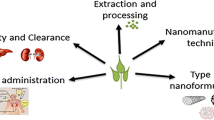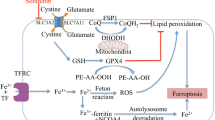Phosphorylation of τ-protein, a component of microtubules in brain neurons, is a key pathomorphological sign of Alzheimer’s disease. The development of this intracellular defect can be promoted by Al3+, Fe3+, and Zn2+ ions. The concentrations of these ions in the brain are considerably elevated in Alzheimer’s disease. We performed a comparative study of phosphorylation of microtubular proteins of rat brain in the presence of Al3+, Fe3+, and Zn2+ ions in concentrations of 10-500 μM and microtubular proteins of brain of patients with Alzheimer’s disease. The most likely candidate for the role of a factor that promotes hyperphosphorylation of τ-protein is Al3+ in concentrations of 250 and 500 μM.
Similar content being viewed by others
References
Shevtsov PN, Shevtsova EF, Burbaeva GSh. Effect of Aluminum, Iron, and Zinc Ions on the Assembly of Microtubules from Brain Microtubule Proteins. Bull. Exp. Biol. Med. 2016;161(4):451-455.
Shevtsov PN1, Shevtsova EF, Burbaeva GSh, Bachurin SO. Disturbed assembly of human cerebral microtubules in Alzheimer’s disease. Bull. Exp. Biol. Med. 2006;141(2):265-268.
Abdel-Ghany M, el-Sebae AK, Shalloway D. Aluminum-induced nonenzymatic phospho-incorporation into human tau and other proteins. J. Biol. Chem. 1993;268(16):11,976-11,981.
Andrási E, Farkas E, Scheibler H, Réffy A, Bezúr L. Al, Zn, Cu, Mn and Fe levels in brain in Alzheimer’s disease. Arch. Gerontol. Geriatr. 1995;21(1):89-97.
Buée L, Bussière T, Buée-Scherrer V, Delacourte A, Hof PR. Tau protein isoforms, phosphorylation and role in neurodegenerative disorders. Brain Res. Rev. 2000;33(1):95-130.
Craddock TJ, Tuszynski JA, Chopra D, Casey N, Goldstein LE, Hameroff SR, Tanzi RE. The zinc dyshomeostasis hypothesis of Alzheimer’s disease. PLoS One. 2012;7(3):e33552. doi:https://doi.org/10.1371/journal.pone.0033552.
el-Sebae AH, Abdel-Ghany ME, Shalloway D, Abou Zeid MM, Blancato J, Saleh MA. Aluminum interaction with human brain tau protein phosphorylation by various kinases. J. Environ. Sci. Health. 1993;28(6):763-777.
Leskovjan AC, Kretlow A, Lanzirotti A, Barrea R, Vogt S, Miller LM. Increased brain iron coincides with early plaque formation in a mouse model of Alzheimer’s disease. Neuroimage. 2011;55(1):32-38.
Li W, Ma KK, Sun W, Paudel HK. Phosphorylation sensitizes microtubule-associated protein tau to Al(3+)-induced aggregation. Neurochem. Res. 1998;23(12):1467-1476
Shin RW, Lee VM, Trojanowski JQ. Aluminum modifies the properties of Alzheimer’s disease PHF tau proteins in vivo and in vitro. J. Neurosci. 1994;14(11, Pt 2):7221-7233.
Vladimirova NM, Sautkina EN, Ovchinnikova TV, Potapenko NA. Interaction between tubulin and Na+,K+-ATPase in brain stem neurons. Biochemistry (Mosc). 2002;67(4):503-509.
Walton JR. Aluminum involvement in the progression of Alzheimer’s disease. J. Alzheimers Dis. 2013;35(1):7-43.
Wenstrup D, Ehmann WD, Markesbery WR. Trace element imbalances in isolated subcellular fractions of Alzheimer’s disease brains. Brain Res. 1990;533(1):125-131.
Xiong Y, Jing XP, Zhou XW, Wang XL, Yang Y, Sun XY, Qiu M, Cao FY, Lu YM, Liu R, Wang JZ. Zinc induces protein phosphatase 2A inactivation and tau hyperphosphorylation through Src dependent PP2A (tyrosine 307) phosphorylation. Neurobiol. Aging. 2013;34(3):745-756.
Youdim MB, Ben-Shachar D, Riederer P. Iron in brain function and dysfunction with emphasis on Parkinson’s disease. Eur. Neurol. 1991;31, Suppl. 1):34-40.
Author information
Authors and Affiliations
Corresponding author
Additional information
Translated from Byulleten’ Eksperimental’noi Biologii i Meditsiny, Vol. 165, No. 4, pp. 509-512, April, 2018
Rights and permissions
About this article
Cite this article
Shevtsov, P.N., Shevtsova, E.F., Savushkina, O.K. et al. Influence of Al3+, Fe3+ and Zn2+ Ions on Phosphorylation of Tubulin and Microtubulo-Associated Proteins of Rat Brain. Bull Exp Biol Med 165, 512–515 (2018). https://doi.org/10.1007/s10517-018-4206-7
Received:
Published:
Issue Date:
DOI: https://doi.org/10.1007/s10517-018-4206-7




